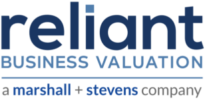03 Sep Depreciation Downfall
Depreciation is not a precise measurement of “reduction in value” from original cost. It is an estimate of the decrease in the useful life of an asset, and the ‘useful life’ is an arbitrary measurement, consistently applied for accounting purposes. Therefore, the net book value may not represent the ‘true value’ of the equipment on the measurement date.
The SBA SOP 50 10 5(D) outlines requirements for fixed asset appraisals, more specifically machinery and equipment. Page 189‐190 states: “If the valuation of fixed assets is greater than their depreciated value, an independent appraisal must be obtained to support the higher valuation.” In other words, if a lender is looking to collateralize machinery and equipment (fixed assets) for an amount greater than the book value, a certified appraisal will be required to be on file.
Using net book value of machinery and equipment may be acceptable to the SBA, however it will not provide the lender with accurate values for collateralization purposes. When ordering an equipment appraisal, lenders should request fair market value of machinery and equipment, in addition to orderly or forced liquidation values whenever possible. Fair market value is best used alongside a business valuation to determine the most accurate enterprise value, including tangible and intangible assets. Orderly or forced liquidation values will help to determine what might be recouped if the lender is forced to liquidate in the future.
In most cases, the market value of an asset decreases at a slower pace than the amount being depreciated on the company’s books using standard MARCS depreciation (especially if using a Section 179 election). This leads to lower collateralized values. It should also be noted that these depreciation methods are prescribed for tax purposes and may not represent GAAP (Generally Accepted Accounting Principles).
As an example, take a Ryobi 512H printing press purchased new in January 2005 for $65,000. The standard MARCS recovery period for printing equipment is seven years, so this piece of equipment would have been fully depreciated by December 2011, with a net book value of zero. As of today’s date, the 2005 Ryobi 512H printing press has a fair market value of $24,000, an orderly liquidation value of $20,000, and a forced liquidation value of $17,000. In this case, relying on the net book value would leave the lender looking for additional collateral or passing on a deal that could have been otherwise partially secured.
Given that depreciation methods being used may be different from company to company, lenders should consider a more accurate representation of market values for fixed assets rather than using net book values. This will ensure that accurate collateral values are assigned to those assets, giving lenders the flexibility to make financially sound lending decisions.


